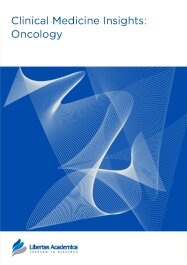

Publication Date: 28 Apr 2014
Type: Review
Journal: Clinical Medicine Insights: Oncology
Citation: Clinical Medicine Insights: Oncology 2014:8 37-47
doi: 10.4137/CMO.S15239

Germline BAP1 (BRCA1-associated protein-1) mutations are involved into a novel specific cancer syndrome and strictly associated with a high cancer susceptibility. Recent data suggest that BAP1 has activity toward target substrates explaining why loss of BAP1 causes a pro-tumorigenic deregulation of gene expression. The recently published data reviewed raise the hypothesis that BAP1 regulates a common subset of substrates, which in turn causes a pro-tumorigenic deregulation of gene expression, and alternatively suggest the role of BAP1 as tumorigenesis suppressor/promoter also by independent mechanisms. The clinical phenotype of BAP1 alterations includes MBAITs (melanocytic BAP1-mutated atypical intradermal tumors), uveal melanoma (UM), cutaneous melanoma (CM), renal cell carcinoma (RCC), mesothelioma (MM), and possibly several other tumors. In clinical practice, early diagnosis is crucial for curative resection of all these tumor types. The uniformed and unambiguous definition of MBAITs as clinical/pathological predictive markers could provide physicians means to identify patients who may carry germline BAP1 mutations and thus could be at high risk of developing CM, UM, MM, RCC, and possibly other tumors. As part of a novel multidisciplinary approach, physicians, pathologists, and clinicians involved into diagnostics should be aware of the histological features and the spectrum of tumors associated with BAP1 loss. Further clinical, epidemiological, and functional studies are required to fully explain the roles of BAP1 and its interaction partners in neoplasia, to define mechanisms behind shared and non-shared clinical and pathological criteria.
PDF (1.18 MB PDF FORMAT)
RIS citation (ENDNOTE, REFERENCE MANAGER, PROCITE, REFWORKS)
BibTex citation (BIBDESK, LATEX)
XML
PMC HTML

The editors were extremely helpful and prompt in responding to questions and issues related to the submission. The online submission was easy and quick. The whole process from submission to publication was very satisfying and expeditious.
Facebook Google+ Twitter
Pinterest Tumblr YouTube